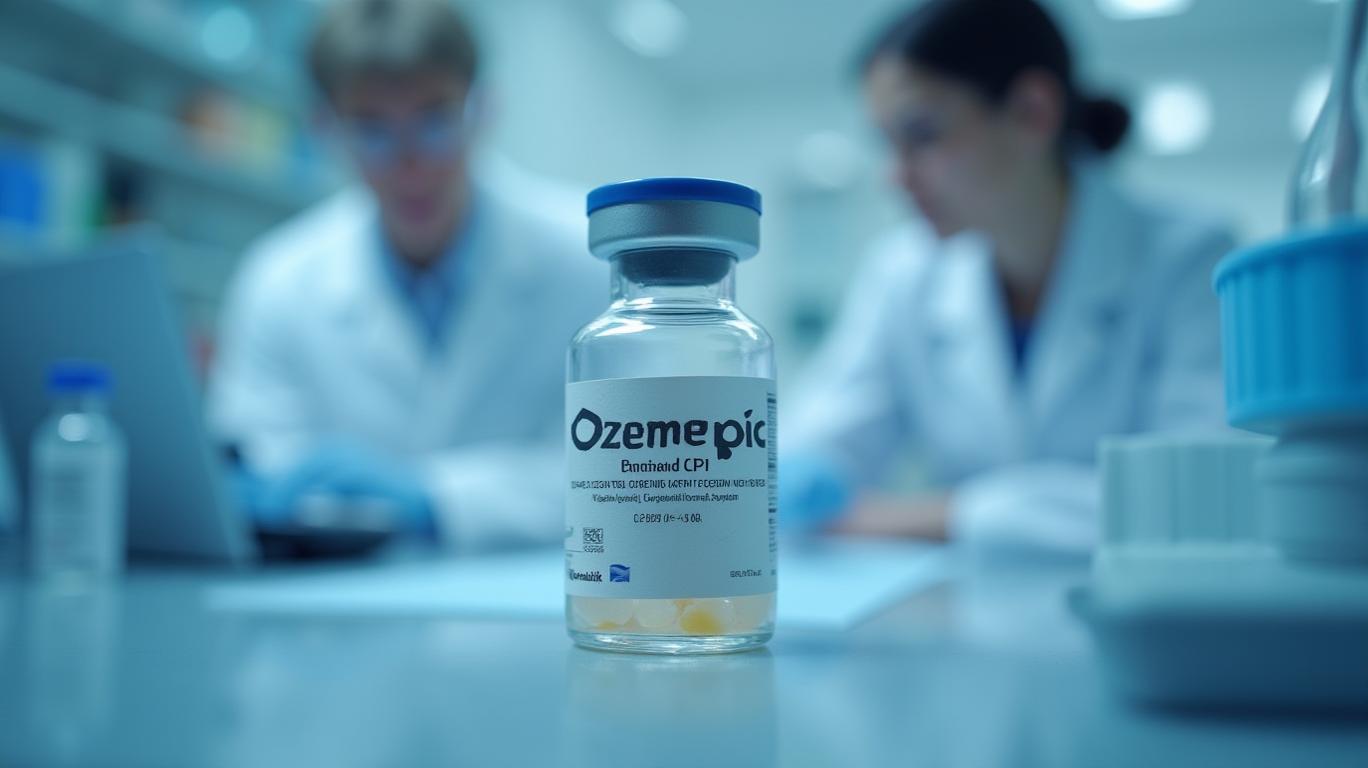Navigating Healthcare Volatility: Seizing Innovation Amid Tariff Turbulence and M&A Catalysts
The healthcare sector is at an inflection point. As trade tensions, regulatory shifts, and M&A activity reshape the landscape, investors face a paradox: short-term risks loom large, yet long-term catalysts—such as breakthrough therapies and strategic deals—offer asymmetric upside. This article dissects the diverging paths of biotech and pharma equities, spotlighting Novo Nordisk’s tariff exposure, Plus Therapeutics’ orphan drug milestone, and Bausch Health’s transformative deal, to argue that sector pullbacks present selective entry points into innovation-driven firms, while trade-sensitive stocks demand caution.
Near-Term Risks: Tariffs and Trade Uncertainty in Pharma
The U.S. tariff threat hangs over global pharma giants like Novo Nordisk, whose 50% U.S. revenue exposure to diabetes and obesity therapies (e.g., Ozempic, Wegovy) puts it in the crosshairs. Recent data reveals a 47.5% surge in Danish exports to the U.S. in March 2025 as manufacturers stockpile ahead of potential tariffs, yet the risks remain acute.

While the company’s reliance on EU-manufactured APIs and insulin supplies creates vulnerability, its strategic investments—like a $27 billion U.S. manufacturing push—signal resilience. However, Medicare’s price negotiation battles and insulin supply chain fragility underscore near-term volatility. Investors must weigh these risks against Novo’s 8.3% contribution to Denmark’s GDP, a testament to its scale and systemic importance.
Long-Term Catalysts: Orphan Drugs and M&A-Driven Growth
Plus Therapeutics: Orphan Designation Unlocks a Lifeline
The FDA’s Orphan Drug Designation (ODD) for Plus Therapeutics’ Rhenium (186Re) Obisbemeda in leptomeningeal metastases (LM) marks a breakthrough. This radiotherapeutic targets a rare, lethal condition with no FDA-approved treatments and a 93% mortality rate within two years. The ODD grants 7 years of market exclusivity, tax credits, and fee exemptions—critical for a firm with a $1.78M market cap (). Clinical data showing a complete response in one patient and no dose-limiting toxicities at the Phase 2 recommended dose highlight its potential. With a $17.6M CPRIT grant fueling trials, this tiny biotech could become a major player in CNS oncology.
Bausch Health: Leveraging M&A to Diversify Risk
The $1.2B deal to acquire Globus Medical and Nevro—two spine and neuromodulation leaders—repositions Bausch (BHC) as a diversified medtech powerhouse. The move reduces reliance on legacy drugs while tapping into high-growth markets like pain management.
Analysts estimate $250M in annual synergies, with Nevro’s spinal cord stimulators and Globus’s surgical devices offering defensive cash flows. This strategic pivot exemplifies how M&A can insulate firms from trade risks and regulatory headwinds, making BHC a compelling “buy the dip” candidate.
ETF Divergence: XLV Stability vs. IBB Volatility
The sector’s fragmentation is starkly visible in ETF performance:
- XLV (Health Care Select Sector SPDR): Up 12% YTD, led by large-cap stability stocks like Johnson & Johnson and Pfizer, which benefit from steady demand and diversified portfolios.
- IBB (iShares Nasdaq Biotechnology ETF): Down 7% YTD, reflecting biotechs’ sensitivity to clinical trial outcomes, funding gaps, and regulatory hurdles.
This divergence underscores the need for stock-specific analysis. Investors chasing broad exposure may miss the nuances: innovation-driven names with FDA tailwinds (e.g., Plus Therapeutics) or M&A beneficiaries (e.g., Bausch) offer better risk-reward than passive ETF plays.
Conclusion: Selectivity is Key
The healthcare sector’s volatility presents a clear path forward:
1. Avoid trade-sensitive pharma giants like
2. Embrace innovation leaders with FDA catalysts (e.g., Plus Therapeutics’ ODD) or strategic M&A (e.g., Bausch’s diversification).
3. Beware ETF beta: XLV’s stability masks internal fragmentation; IBB’s dips are opportunities only for those willing to dig into fundamentals.
For investors willing to navigate this landscape, the rewards are profound. As Novo Nordisk weathers tariffs and Bausch reshapes its portfolio, Plus Therapeutics’ ODD-fueled rise exemplifies the power of unmet need in oncology. Now is the time to position for the next wave of healthcare innovation—before the market catches on.
Act decisively, but act selectively.
Data as of May 22, 2025.

Comments
No comments yet